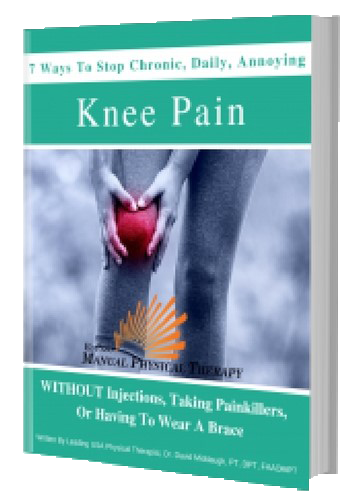TAP TO CALL (915) 503-1314

WHICH IS BETTER, A CEMENTED OR A NON-CEMENTED KNEE REPLACEMENT?
Which is better a cemented knee replacement surgery or a non cemented knee replacement surgery. In this video, I’m giving you the pros and cons of each, but it’s always going to be up to you and your surgeon to discuss which option is better for your specific situation. The pros of a cemented knee surgery are that recovery tends to be a lot faster because the cement will hold the implant up against the ends of the bones where the joint was replaced.
That cement hardens very fast. Within 10 minutes of applying it. So you can guarantee that it’s going to be fixated very well on the ends of your bones. That means you can get to put pressure on it pretty quickly and you can even begin to do exercise week one after having the surgery done. Using cement is also good for people that have osteoporosis or other bone strength related problems because you don’t have to rely on the bone two chains like you do in a non cemented situation.
So that bone will attach directly to the implant immediately after the cement is applied. And one more advantage is that the cement is improved in quality over the years. Now it’s predicted to last anywhere from 10 to 20 or more years. And in case you’re wondering what the cement looks like, it’s a Play-Doh looking like substance that the surgeon can mold in shape to your specific joints, and they’ll put it on the ends of the bone or on the surfaces of the implants, and they’ll push the implant onto the bone, and some of the cement might squeeze out of the sides.
They’ll clean it up and make sure that there’s no extra cement left in your body. Now, let’s talk about some of the pros of a non cemented or a cement-less, knee replacement surgery in this situation on the ends that articulate the side that connects to the bone where they shave off the end of the bone and they’re putting the implants on the side of the implant that connects to the bone is rough in surface and has a bunch of little canals or little openings in it so that when they put it onto the bone without cement, the bone will grow into all those little canals and spaces and adhere with bone onto the artificial replacements.
The pros of this is that you don’t have to worry about cement. It’s one less thing to worry about. On rare occasion, there’s allergies to the cement, and so you don’t have to worry about the cement being in your body and causing a problem. And it’s thought that there’s a better long term connection between the bone and the artificial implant because the bone grows into the implant.
Now, let me tell you about the cons of a cemented knee replacement. The first is that the cement could technically fail. It could crack. There could be problems with it. And then you can also have an allergy to it, as I mentioned before, which might mean you have to take it out and redo your knee replacement surgery. Now the cons to a simple list surgery is that it takes longer to recover because you need to give the bone time to grow into all those grooves, all those uneven surfaces on the backside of the artificial replacement so that it can adhere properly.
This tends to mean that the rehabilitation process afterwards is longer and usually is a bit more difficult because you’ll lose more strength because of the delays involved with allowing that bone to heal properly. Now I want to just give you some other considerations. As of now, the research available for how long these surgeries last and the need for revision isn’t that great.
It isn’t super reliable. What they do show is that within a few years after having a knee replacement, there’s no increased risk or a rates of having a revision done where you have to redo the surgery based on doing it cemented or non cemented. So there isn’t really a big risk for that upfront. Now, there isn’t a whole lot of research that goes beyond several years and the cement is expected to last 10 to 20 years.
But we don’t know if it goes beyond that. And given that people are living longer these days and they’re more active, you probably want that knee replacement surgery to be the last surgery you ever have. So because of that, what I would recommend, if it’s right for you and your surgeon agrees is that you get the non cemented versions that you can allow the bone to heal.
Now, like I said, the recovery time is going to be quicker, but it’s one less thing to worry about, not having cement in your body. Now, if you have not had a knee replacement yet, the deeper rooted problem that I haven’t even mentioned here, because you’re probably looking at, you know, which surgery to have and how to go about having a surgery, but make sure that you look at the root muscle imbalance that’s setting up knee arthritis and causing all these excessive pressures in your knee joint, because there’s a chance that if you address that muscle imbalance, you might actually feel like you don’t need to go have a knee replacement.
And even if you do have a knee replacement, that muscle imbalance could be carried over into life after having the knee replacement, and it could set you up to have chronic pain in your knee. Setting up the situation where people feel like they had a failed knee replacement. And this is what I think can injure the cement in a cemented knee replacement surgery.
I’ve got a bunch of videos to help out people that are suffering from knee arthritis in a playlist linked down in the description below. And I’ve also got another playlist for people that are suffering from pain after having had a failed knee replacement. There’s a playlist for them with a ton of videos down in the description below. I’ve also got some programs a Knee Arthritis Recovery Program and a Failed Knee Replacement Recovery Program that you can learn more about in those same links in the description below.
Hey, thanks so much for watching. Please give us a thumbs up. If you thought this video was helpful, don’t forget to subscribe and hit the notification bell so you don’t miss out on any of the videos that we post each and every week. Thank you so much. I’ll see you in the next video. Bye bye.
Would You Like To Talk With A Specialist?
Appointments and Questions Call: (915)503-1314
EL PASO MANUAL PHYSICAL THERAPY
2601 E. Yandell Drive, Suite 232
El Paso, Texas 79903
© 2023 El Paso Manual Physical Therapy, PLLC, All Rights Reserved
